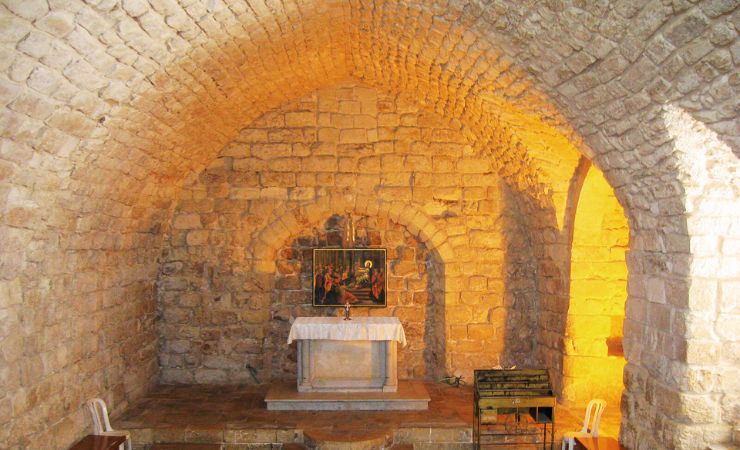Synagogue Church: Jesus Chased by an Angry Mob
The name, “Synagogue Church,” stems from the longstanding tradition that places this very location as the site of the village synagogue during Jesus’ time.

Location
The Synagogue Church is situated at the center of Nazareth, Israel.
Biblical context
The Synagogue Church is believed to stand on the very grounds of the ancient Nazareth synagogue where Jesus once studied and prayed. According to Christian tradition, this is the place where Jesus, on one Sabbath day, chose to preach.
In the Gospels of Matthew (13:54-58) and Mark (6:1-6), it’s recounted how the townspeople, familiar with Jesus, questioned his authority to preach and perform miracles. They were skeptical, leading Jesus to remark on a prophet’s lack of honor in his hometown.
Jesus left there and went to his hometown, accompanied by his disciples. When the Sabbath came, he began to teach in the synagogue, and many who heard him were amazed. What are these remarkable miracles he is performing? ….And they took offense at him. Jesus said to them, “A prophet is not without honor except in his own town, among his relatives and in his own home.” He could not do any miracles there, except lay his hands on a few sick people and heal them. He was amazed at their lack of faith.
However, the Gospel of Luke (4:14–30) offers a slightly different account. Here, Jesus reads from Isaiah 61:1,2, and initially, the worshippers are pleased. But as he continues, he implies his role as the Messiah, which angers the listeners. They attempt to throw him off a cliff, but he miraculously walks through the crowd unharmed. The cliff is identified today at the Mount of Precipice, located on the south of Nazareth.



Historical Overview of the Current Synagogue Church
The Synagogue Church, as it stands today, is a quaint Christian church. An emblematic sign in both Arabic and English, reading “Synagogue,” is prominently displayed above its entrance. The structure is currently under the stewardship of the Melkite Greek Catholic Church. Historically, in the year 570, an Italian traveler documented the existence of Nazareth’s synagogue and even mentioned that the original Bible, along with the bench where Jesus used to sit, was still present there.
Architecturally, the Synagogue Church is unique; its floor is sunken about 1.5 meters underground, hinting at its possible construction atop a Crusader church from the 12th century. Initially under the guardianship of the Catholic Church (the Franciscans), the church transitioned to the care of the Greek Catholics in the 18th century, thanks to the decree of ruler Zahir al-Umar. By 1887, the Melkite Greek Catholic parish Church of the Annunciation was constructed adjacent to the Synagogue Church.
Sources and Additional Reading:
The Archaeology of Nazareth in the Early First Century
Synagogue Church Nazareth – Wikipedia
Archeological Findings
- Ancient Foundations: The floor of the Synagogue Church is approximately 1.5 meters underground, suggesting it might have been built atop a Crusader church from the 12th century.
- Archaeological Evidence: At the nearby Church of the Annunciation, excavations have revealed rock-cut pits used for crop storage, cisterns for water, and installations for wine and olive oil production. These findings date back to the early first century, indicating the presence of a settlement during that period.
- Tombs: A series of rock-cut tombs discovered mainly in the 19th century are believed to be from the period of the Gospels. However, their exact dating remains uncertain.
Sites Near the Synagogue Church, Nazareth
- Church of the Annunciation: A significant Christian Catholic site believed to be where Angel Gabriel announced to Mary that she would conceive Jesus.
- Greek Catholic Church of Annunciation: The Orthodox Church of the Annunciation. Close to it is Mary’s Well.
- Mount Precipice: Also known as the “Hill of the Leap of the Lord.” This is where an angry mob attempted to throw Jesus off a cliff after he preached in the Church Synagogue.
- Sepphoris: An ancient city known for its rich mosaic art. It was a significant urban center in the time of Jesus.



